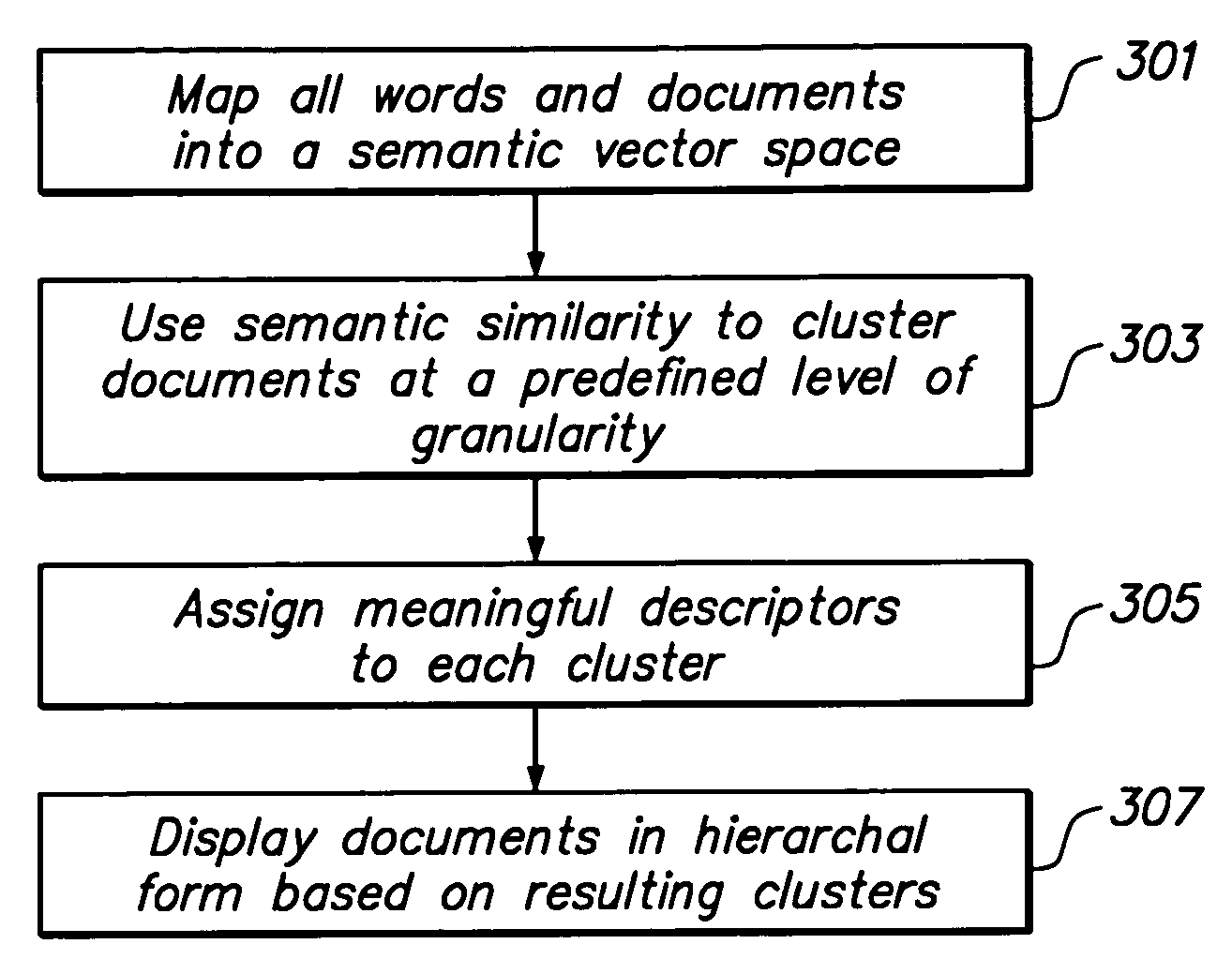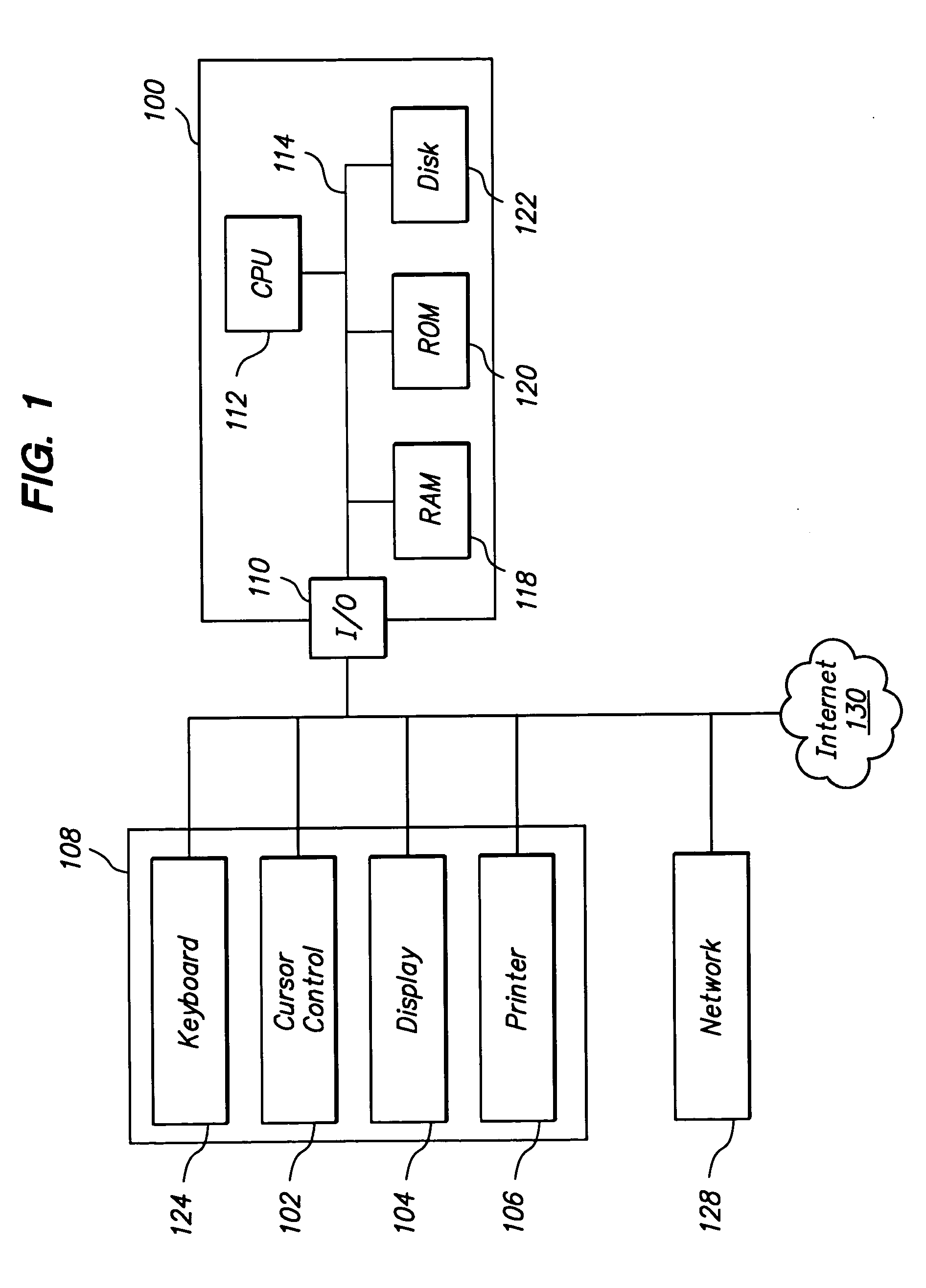Method and apparatus for automatic file clustering into a data-driven, user-specific taxonomy
a file system and user-specific technology, applied in the field of graphical user interfaces, can solve the problems of increasing the difficulty of users to navigate this ever-expanding portion of the file system, affecting the user experience,
- Summary
- Abstract
- Description
- Claims
- Application Information
AI Technical Summary
Benefits of technology
Problems solved by technology
Method used
Image
Examples
example
Preliminary experiments were conducted using a database of 324 files varying in length from 14 to 3328 words, with an average length of 471 words. This sample set is reasonably representative of the range of text document sizes likely to be produced by an average user. The general domain was financial news, which is narrower than the typical user's. Accordingly, this database translates into fairly severe test conditions.
The approach described above was used to derive a hierarchical structure with 3 levels of granularity. The bottom level (level-3) comprised the 324 documents themselves, the middle level (level-2) a total of 20 clusters, and the top level (level-1) 5 superclusters. No word agglomeration was performed, so label descriptors comprised individual words only. The top 3 or 4 words were retained for the purpose of illustration. In a preferred embodiment, word agglomeration would better capture multi-word expressions like “interest rate.”
Table I offers a partial display...
PUM
 Login to View More
Login to View More Abstract
Description
Claims
Application Information
 Login to View More
Login to View More - R&D
- Intellectual Property
- Life Sciences
- Materials
- Tech Scout
- Unparalleled Data Quality
- Higher Quality Content
- 60% Fewer Hallucinations
Browse by: Latest US Patents, China's latest patents, Technical Efficacy Thesaurus, Application Domain, Technology Topic, Popular Technical Reports.
© 2025 PatSnap. All rights reserved.Legal|Privacy policy|Modern Slavery Act Transparency Statement|Sitemap|About US| Contact US: help@patsnap.com



